#seax
Explore tagged Tumblr posts
Text
@nimblermortal sent me this last week:
A second blade weapon became increasingly common in the later Viking Age. It does not have a formal name, being often referred to as a fighting-knife or battle-knife, and it was essentially a development of the one-handed, long seax knife of the Migration Period. A single-edged blade with a thick back that added weight to a short, stabbing blow, it seems to have been intended as a back-up weapon. By the tenth century, battle-knives had elaborate scabbards that were worn horizontally along the belt, allowing them to be drawn across the body from behind a shield if the sword was gone; a variant hung down at an angle from an elaborate harness. It seems they may also have been worn on the back - again for a swift, over-the-shoulder draw. Children of Ash and Elm by Neil Price @petermorwood (Mr Morwood! Mr Morwood!) I found an archaeologist claiming people were doing over-the-shoulder draws! Would you care to weigh in?
*****
Would I ever! That's a button well pushed. But things got odd when I tried, because as soon as I'd written even the smallest reply and saved to Draft, this happened:
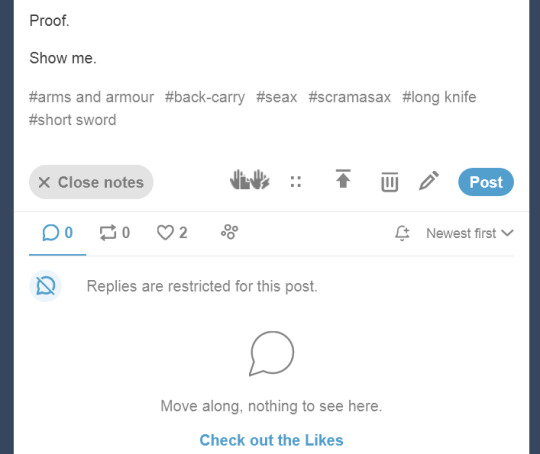
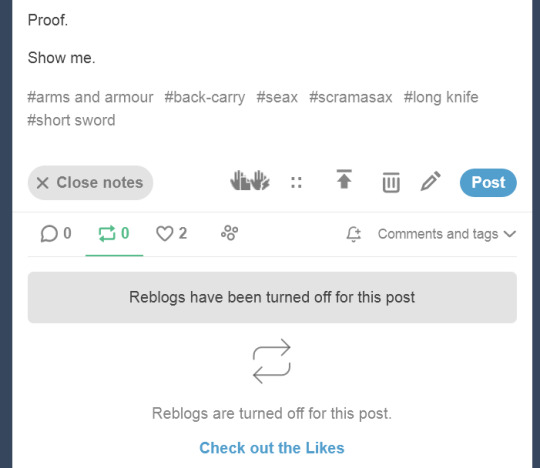
Letting it stand would have seemed like I was trying to avoid comments, corrections or criticism, but despite poking around in Settings there was no way to turn things on. It was only by cut-and-pasting @nimblermortal's entire original as a Quote starting a new post that the problem was resolved.
Anyone else encountered this?
Anyway, on with the lecture response. :->
*****
As regards Back-Carry / Back-Draw of "battle-knives", I'm not convinced.
("Battle-knife" is a term I've never seen in connection with any Viking Age weapon. What's the Old Norse for it? German "Kriegsmesser" (war-knife) refers to something much bigger from 500 years later, also not back-carried or back-drawn - which from here on will be BD / BC.)
To get where he is now, a full professor, Neil Price will have defended his PhD, and should know such a statement as "It seems they may..." will need evidence to support it.
That phrase is easy to write, as is "According to legend..." and "It is said..." However these are IMO default History Channel phrases, with all the authenticity that implies. None of them actually PROVE what they're speculating.
"Experiments conducted by museum staff wearing authentic armour reveal that IT SEEMS medieval knights could use smartphones."
But does it prove medieval knights USED smartphones? See what I mean?
*****
I first asked if anyone had actual proof of BC / BD on Netsword almost 30 years ago, and to date there's been nothing. I've also posted about it quite a lot on Tumblr, so being poked with this particular stick is no surprise. :->
The quotation from "Children of Ash and Elm" is the first time I've heard of a trained archaeologist making a claim for BC / BD, and the odd part is that Prof. Price also states the weapon was intended for "...a short, stabbing blow" - which means wearing it horizontally in front makes far more sense. From that position it can be drawn far faster and with less telegraphed intent than "...on the back - again for a swift, over-the-shoulder draw."
Reaching up for any weapon carried across the back, whether long or short, is a bigger movement - and thus less "swift" - than snatching out the same weapon worn at the hip or across the front at waist level, especially if - as he suggests - that move is masked behind a shield (or for that matter a cloak, a door, or a half-turned torso...)
Try both moves in front of a mirror with a ruler or even a length of dowel, and you'll understand.
With a weapon-hilt visible behind one shoulder or just a cross-belt suggesting something slung out of sight, what's a Norse warrior going to think when his potential opponent reaches up there? At a moment of hot words and high tension, will he wait while an itchy back gets scratched or until an attack happens?
The explosive violence described in sagas suggests not.
If Prof. Price has solid proof for his BC / BD notion in the form of artefacts or art - and it'll need more than a one-off example - I'll be very pleased to finally see some "show me" evidence.
(It won't do anything for longswords of 500 years later, of course, though I bet the uncritical back-carry brigade would leap on it regardless.)
But without that evidence, I'm taking "it seems" with a wary pinch of salt.
*****
There's a weird internet fixation about BC / BD (which are NOT the same thing) and an equally weird need to show that back-draw "works", whether with hooks under the guard and a leather condom at the point...
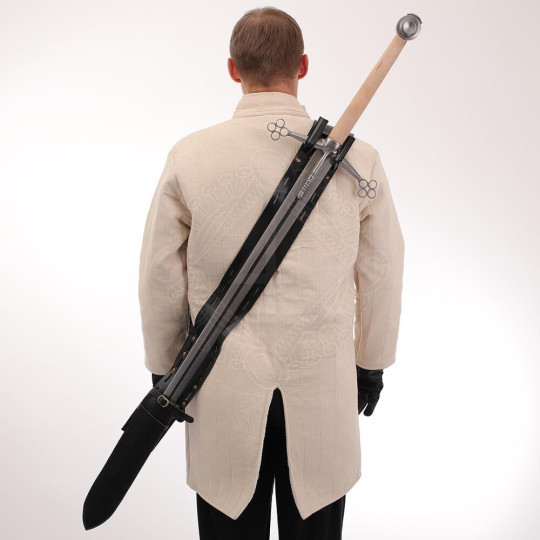
... or by being open most of the way down one side.
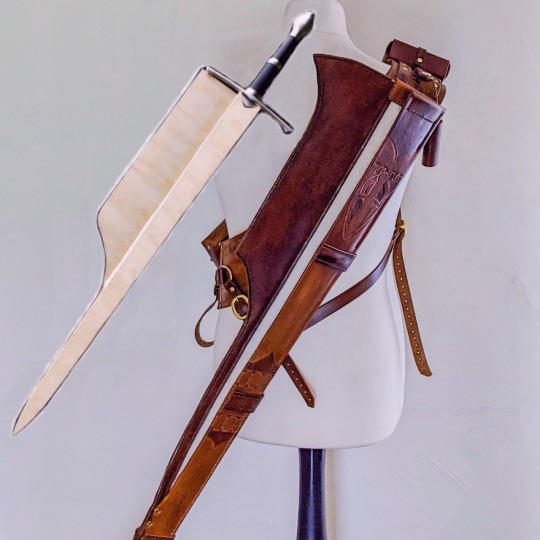
Neither are real-world historical, so let's see how they work in fantasy.
IMO they're not appropriate there either, because the designers are so eager to provide working BC / BD that they ignore the main function of a scabbard, which is to carry the weapon in something which protects people from the weapon's edges, and the weapon from the elements.
Real scabbards for real swords went to some trouble over that. They protected people, including the wearer, with a completely enclosed wooden, leather and / or metal case, and protected the blades by having them fit into their case well enough that inclement weather stayed out.
This fitting could involve metal collars (Japanese habaki), or tight-gripping lanolin-rich fleece linings, or leather flaps, caps and rain-guards mounted on hilt or scabbard-throat. Real scabbards didn't have exposed metal and weren't open-sided rainfall buckets, because the priorities of actual sword users were very different to those of back-carry fans.
Given the number of posts I've seen about the technical side of fantasy world-building - history, geography, even geology and meteorology - I think this difference is worth noting.
*****
The first time I recall seeing back-carry mentioned in a historical-not-fantasy context was in "Growing Up in the Thirteenth Century", © Alfred Duggan 1962. Here's the extract in question:
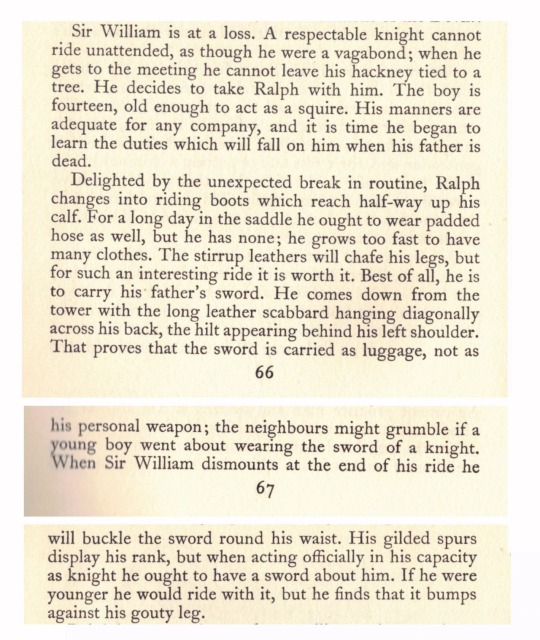
Unfortunately Duggan - though according to his Wikipedia entry "His novels are known for meticulous historical research" - doesn't give any cited source for this; his introduction to the book says:

I know the feeling! :->
I'd still trust him more than some modern historical writers who seem over-willing to add a touch of fantasy speculation / interpretation if it rounds out something inconclusive, makes the history more interesting or chimes with a personal agenda.
"Accurate" is better than "interesting", and "I don't know" is better than making stuff up.
*****
To repeat: I've yet to see any museum-exhibit or manuscript-illumination examples of BC / BD ever done For Historically Real with Western European swords, especially the hand-and-a-half longswords on which modern back-draw fans seem fixated.
A seax, scramasax or just plan sax is shorter, but yet again, this is the first time I've read anything even remotely scholarly about them or their later Viking-age version (saxes were associated more with Saxons than Vikings, guess why?) being BC / BD.
By contrast, there are at least three art instances of saxes worn horizontally, on 10th century crosses at Middleton Church, Yorkshire:

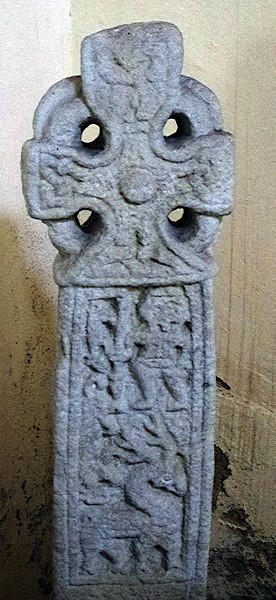

The art is backed up by surviving examples with scabbard-fittings still in place, indicating how they were worn. Here's one example, from the Metropolitan Museum, New York which makes that very obvious.
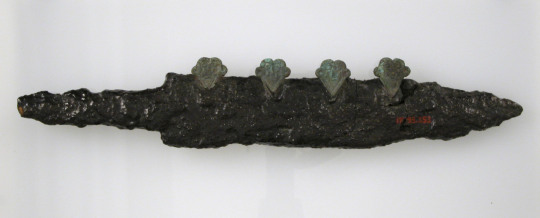
The little decorative masks (originally part of the top of the scabbard, now corroded onto the blade) are clearly meant to be This Side Up, and also show that this scabbard was This Side Out for a right-handed draw, since there's no detail on the back.
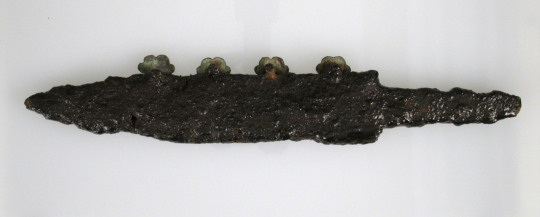
There's a similar fancy-front / plain-back / right-hand-use leather sax scabbard at the Jorvik Centre in York.
There's only a single photograph of this bigger one - 54cm (21.5 in) overall - from the Cleveland Museum of Art, with no way to see if the L-shaped scabbard mount is decorated on just one or both sides. However it does indicate the weapon was meant for horizontal wear.
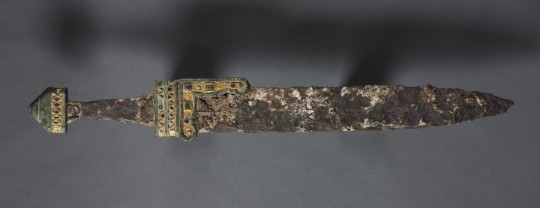
I've also flipped the website photo to show right-hand use, because "It seems..." (hah!) more probable. Here's why I did it:
For most of history being left-handed was unusual, a disapproved-of aberration and the origin of the word sinister.
Left-handers were useless in any formation from Ancient Greece through Ancient Rome to the Saxon and Viking period where the shields of a phalanx, testudo or shield-wall had to overlap for mutual support.
In the Middle Ages, both the specialised armour and the layout of jousting courses were almost 100% right-hand only.
Most surviving swords with asymmetrical hilts, such as swept-hilt rapiers, are made to for right hands not left.
Even nowadays many weapons - including the current British Army rifle (SA-80 / L85/A2) - are set for right-handers only.
*****
The longest saxes are called Langseax (surprise) though this may be a modern-ish term. Here's one from the British Museum, the so-called "Seax of Beagnoth"...

...which is 72 cm (28.5 in) total / 55cm (22 in) blade.
That's about the same as a Roman gladius (another sword never back-worn despite its convenient size) and is a good 25-30cm (10-12 in) shorter than the average "proper" sword of the same period, which means it could be drawn over-shoulder...
However the layout of its runic engraving shows it was almost certainly meant to be worn horizontally As Per Usual.
*****
And now we've come all the way back around to Prof. Price's claim that Vikings did BC / BD with their battle-knives.
Such a claim needs proof.
Please, show me some.
#arms and armour#back-carry#seax#scramasax#long knife#short sword#left-handed weapons#research#evidence
81 notes
·
View notes
Text
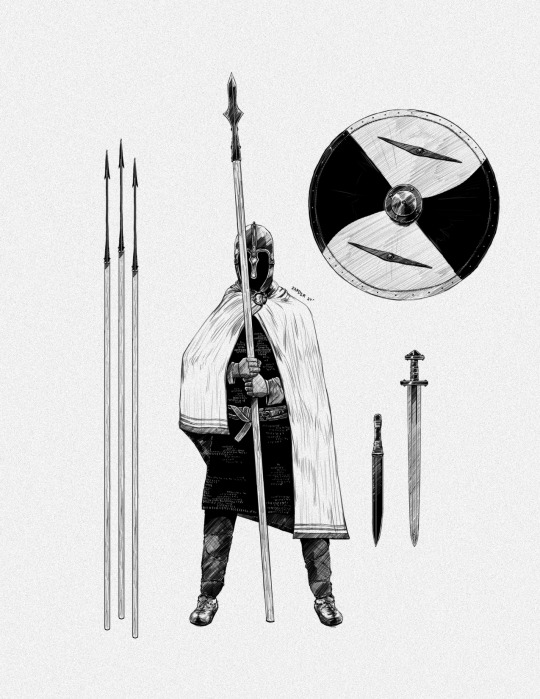
An Anglo-Saxon Warrior - Thane/Thegn
#art#illustration#design#digital art#drawing#drawdrawdraw#character design#sword#rpg#dnd#historical#history#anglo saxon#saxon#england#english#warrior#shield#spear#angon#seax#helmet#cloak
23 notes
·
View notes
Text

Ice Tribe Seax A simple sidearm made from found materials, it's useful to have while hunting a Fanged Gouti, or raiding a village.
#art#my art#digital art#artists on tumblr#jakobos#jakobos art#fan art#the elder scrolls#tes#the elder scrolls travels shadowkey#ice tribes#ice tribe#seax#sword#short sword#weapon art#sword art#sword design#weapon design#concept art#fantasy art#elder scrolls fan art#elder scrolls#skyrim
46 notes
·
View notes
Text
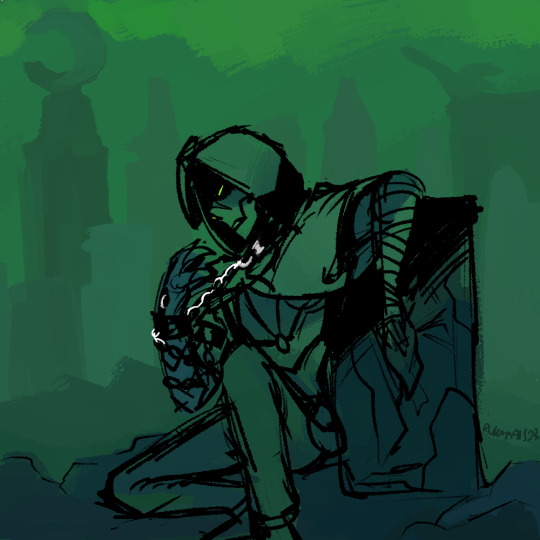
You spend a long time at the shrine marker. Your mind skims like a skittish bird over memories that are and aren't yours, remembering the days when the shrines of the Mountain's Pilgrim were scrubbed-clean stone. How long has it been since you could feel fresh air like this?
Seax warmup. He's having a great time, he has no problems at all (that he will tell Osteon about)!
40 notes
·
View notes
Text
youtube
Since today is April Fools' Day, I would normally post some sort of prank or something, but I'm taking a break from that to show you folks an underrated and - where I'm from - relatively local metal band called Seax. Founded around 2009-2011 and releasing their first album in 2012, they play speed metal in the vein of Judas Priest, Anvil, Acid, Exciter and similar bands. If you love fast and loud 80s-style metal, these guys should be in your collection.
TRIVIA: The band was named after a type of medieval weapon, which technically should be pronounced "sax", but the band pronounces their name "SEE-ax"
#Seax#metal#heavy metal#speed metal#local band#2010s#2010er Jahre#2010-ті роки#2010s music#Musik der 2010er#Музика 2010 років#метал#Хеві-метал#Спід-метал#American music#Американська музика#Youtube
2 notes
·
View notes
Text

King Aethelstan Cyng Æðelstan
2 notes
·
View notes
Text

Anglo Saxon Seax
Anglo Saxon Seax. Visit: https://noblie.eu/wp-content/uploads/2024/05/anglo-saxon-seax.jpeg
2 notes
·
View notes
Text

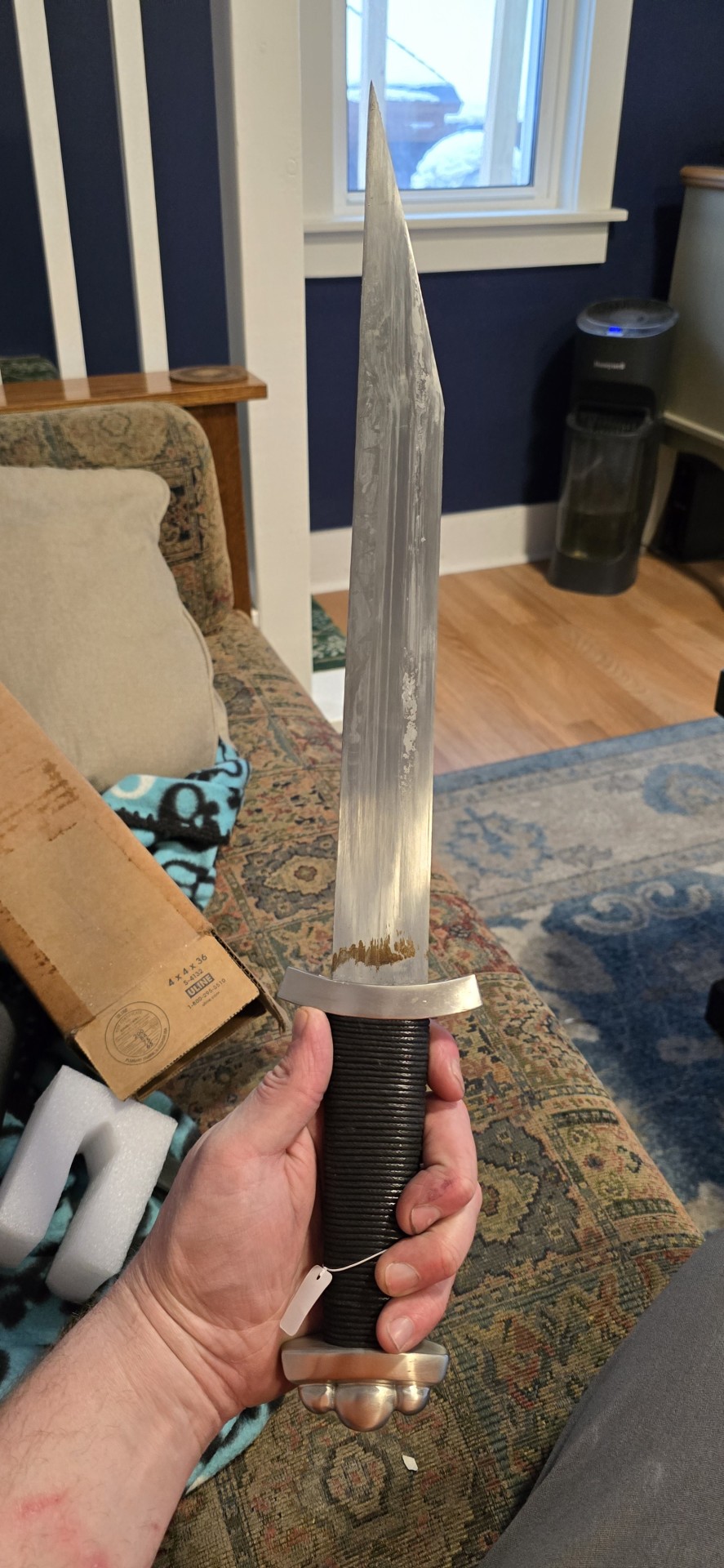
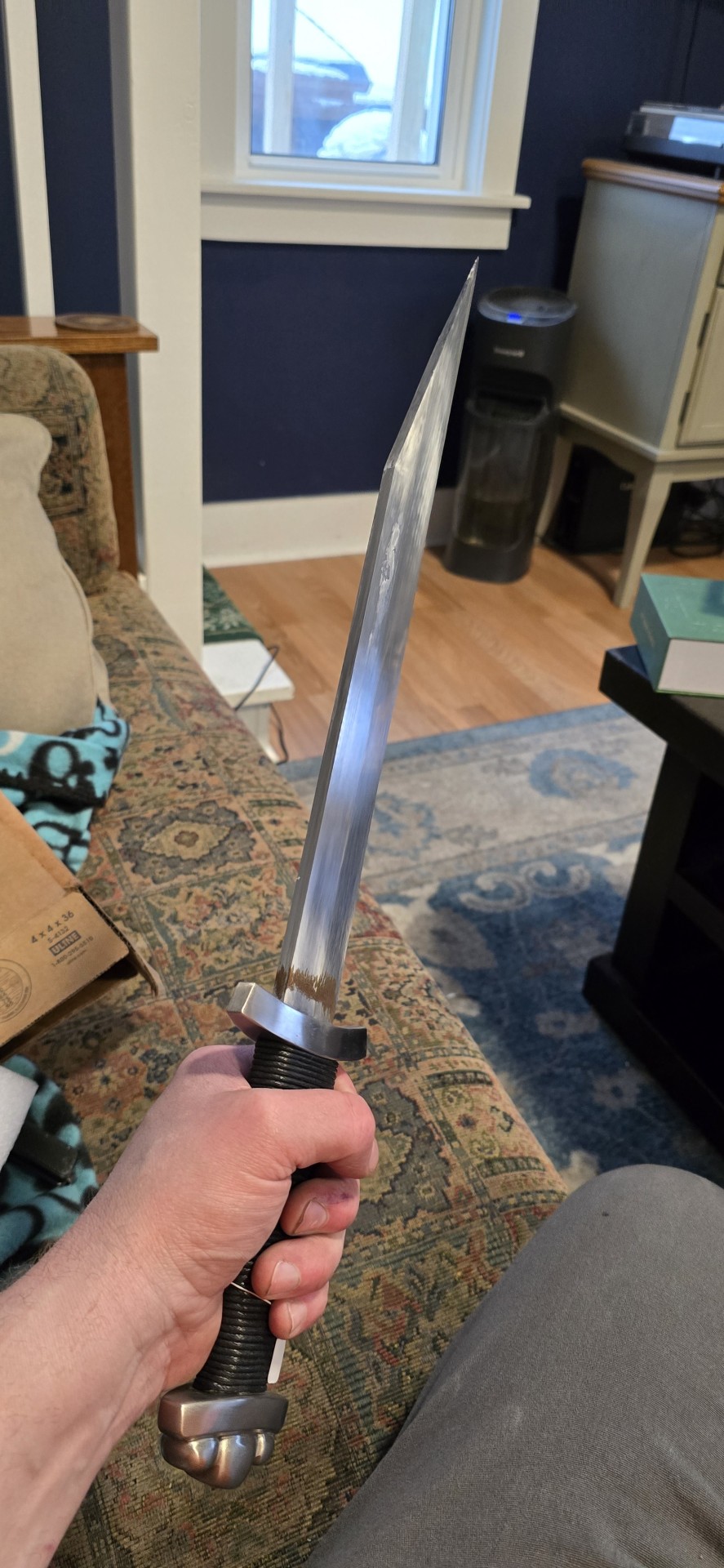

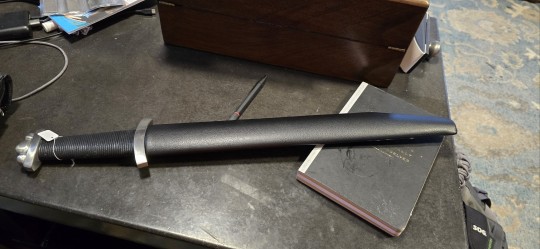
Ronin Katana had their annual scratch and dent sale, so I picked up a very cheap and nice seax. Scratch and dent means I have to clean up a bit of rust and there's some minor cosmetic imperfections, but who fucking cares-- it's a knife, not a glass sculpture.
2 notes
·
View notes
Text
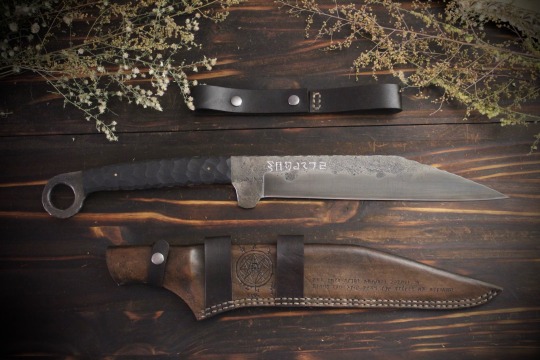
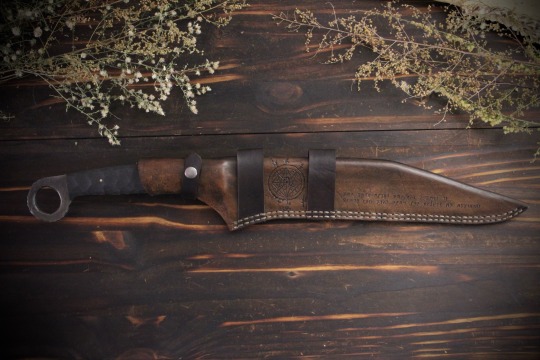

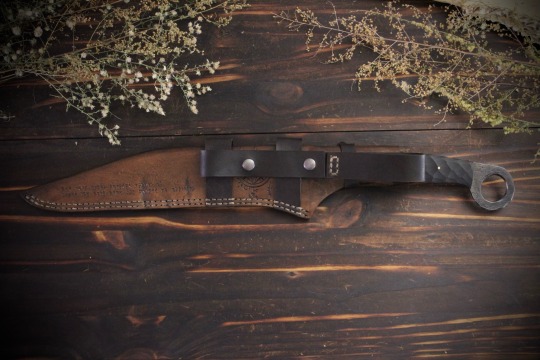
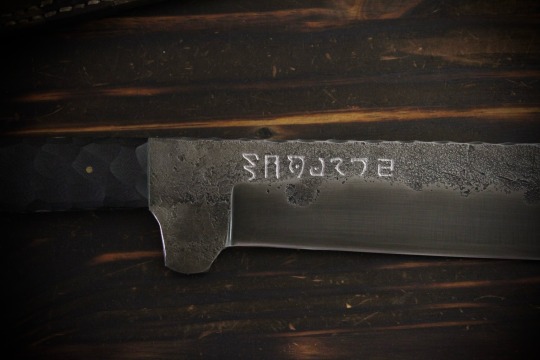

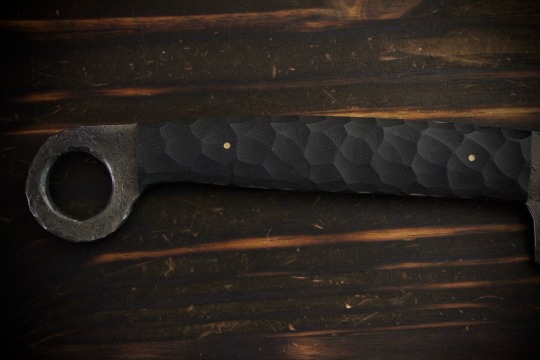

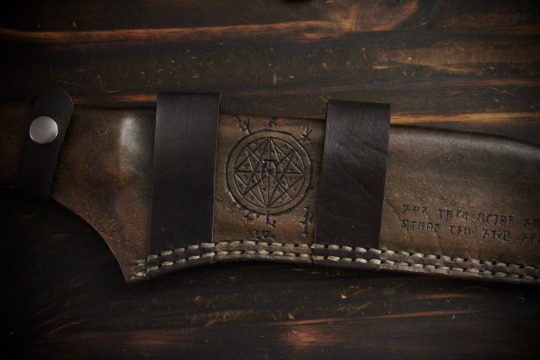
Hey everyone!! Here’s a deadric inspired blade from a few different sources! The blade it self is called “scourge” with deadric text. Check out the link here for more info.
#lunarlightforge#handforged#handmade#hand forged#handcrafted#leatherwork#bushcraft#seax#bushcraftknife#viking seax#leathercraft#oblivion#skyrim#morrowind#deadric#deadrictext
245 notes
·
View notes
Text
Skjaldmaer!

by Linda Easterling
513 notes
·
View notes
Text


Silvered Scramaseax for monster hunting, brass hilt or Filipino-style hilt Made with a chisel grind, the flat side is silver-plated while the beveled side is steel for sharpening without losing too much silver.
0 notes
Text

Another of my end-of-chapter IG story round-ups. ❤️ Only one or two chapters left now!
(...I think. I'm really bad at estimating how many posts it will take me to tell each scene lmao)
48 notes
·
View notes
Text
Round 4, Seax 7 / 10
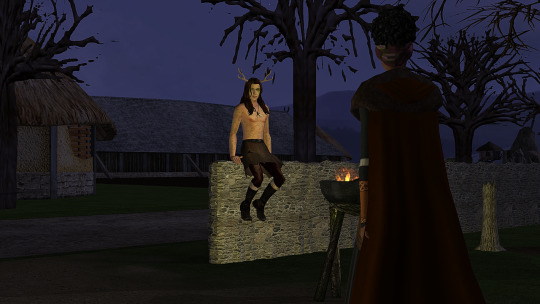
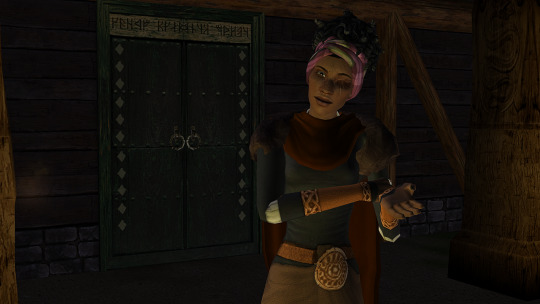
Norweni: Ah. It's you.
Arturo: Lady Knife. I understand that I was summoned?
Norweni: I told Elmet to ask if you would come speak with me. Several days ago.
Arturo: First the little witch, now this one thinks she can summon me at will too.

Norweni: You didn't want to come. Or is it that you couldn't? Helenet says you have some sort of magical condition.
Arturo: …
Norweni: I see.
Arturo: Is this where you attempt to run me out of town?
Norweni: If I were to do that, there would be significantly more people with weapons here. Perhaps a magician, if I could find one that isn't infatuated with you. My grandmother told us plenty of tales about the fae.

Arturo: I'm not one of the fae. The fae are arseholes.

Norweni: Well, on that, we agree. I asked you here because I want to know more about you. You are living in the town I'm responsible for, after all.
Arturo: You hardly own the forest. But I will strike you a bargain. A question for a question.

Norweni: Hm. Very well... where were you born?
Arturo: Here.
Norweni: In Veridia?
Arturo: That's two questions. But yes. I don't remember what its name was then, only that to me, the valley is home. My turn now. How did you lose an eye?

Norweni: …A bar fight.

Arturo: Oh, you don't like telling people that, do you? No, no, it doesn't make for a very noble story.
Norweni: It makes for an embarrassing story. Most people aren't rude enough to ask about it.

Norweni: What are you, if not a faery?
Arturo: I don't know.
Norweni: It's hardly a bargain if you refuse to answer.

Arturo: If I knew, I might have fewer problems.
Norweni: I don't know. You'd probably still have Elmet.
Arturo: Yes, yes, Lady Knife, very funny.

She really doesn't like him, guys. The feeling is mutual!
#he's calling her Lady Knife because a seax is a type of large knife/short sword#also she's probably got at least two knives on her#TS2#eulalia: Veridia#sims: Norweni#sims: Arturo
22 notes
·
View notes
Text
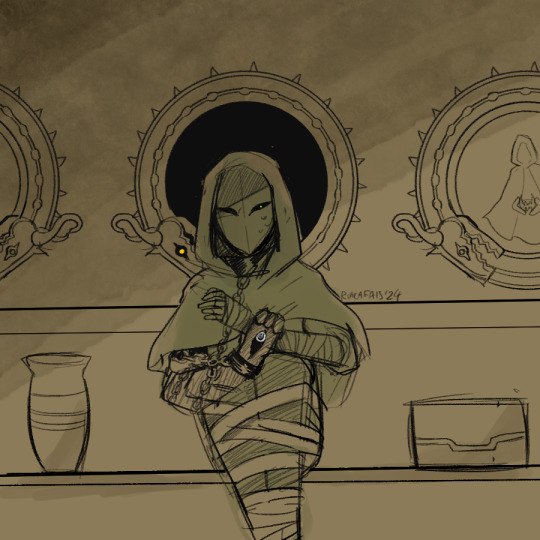
"In certain parts of the world, dragons are depicted as protectors of grave-goods of all sorts and guardians of the afterlife. Depending on culture, they are seen as guardian spirits or transformed sinners who pass judgement on the departed, never to move on themselves and be reborn in the wheel.
Their fearsome visages are often used to decorate the mausoleums and tombs of royalty, a reminder that such mortal treasures have immortal guardians. No matter what it was before, a dragon will guard it jealously as part of its hoard."
48 notes
·
View notes
Text
Hand sewing a little viking kit for my son. ♥️🐻
#pappa made him a toy (wooden) seax#he is so happy to put on clothes and acts so proudwhen wearing the clothes I make him#it is so funny#pappa also made a wooden toy pistol#he LOVES guns lol
7 notes
·
View notes
Text

Seax
Seax. Visit: https://noblie.eu/wp-content/uploads/2024/05/seax.jpeg
1 note
·
View note